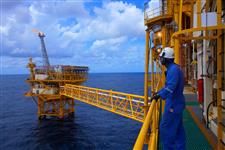
US Researchers Developing Autonomous Robot for Subsea Oil & Gas Pipeline Inspection
Posted 06/09/2023 14:49
Researchers at the University of Houston (UH) are developing an autonomous robot designed to identify potential pipeline leaks and structural failures during subsea inspections at oil and gas projects. The technology, called SmartTouch, will be integrated into remotely operated vehicles (ROVs) equipped with stress wave-based smart touch sensors, video cameras, and scanning sonars. These ROVs will swim alongside subsea pipelines, inspecting flange bolts and assessing the condition of the connections.
A prototype of the ROV has undergone testing in both a laboratory environment and in Galveston Bay. These tests have demonstrated the feasibility of the proposed approach for inspecting the tightness of subsea bolted connections. Preliminary studies were funded by UH's Subsea Systems Institute.
The primary aim of this technology is to automate the inspection process, reducing the cost and risk associated with subsea inspections. By utilizing robotic technology, fewer human divers will be required for these critical inspections, resulting in increased safety and efficiency in offshore oil and gas pipeline operations.
The project has received funding from the U.S. Bureau of Safety and Environmental Enforcement (BSEE), in the form of a $960,493 grant. UH researchers are collaborating with Oceaneering International and Chevron, an oil and gas operator, to evaluate the technology's potential for commercialization.
Beyond pipeline inspections, the researchers believe that this sensing solution will open doors for inspecting other types of subsea structures. It serves as a design template for future robotic technologies and can be adapted to monitor corrosion and mitigate the risk of pipeline failure from various factors, according to Co-Principal Investigator Gangbing Song.








